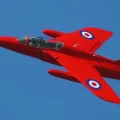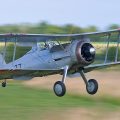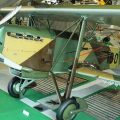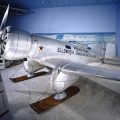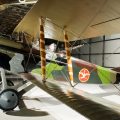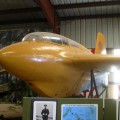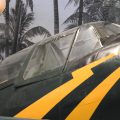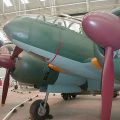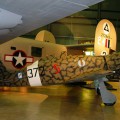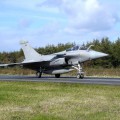
Mitsubishi G4M | |
|---|---|
| Country | Japan |
| Role | Medium bomber/Torpedo bomber |
| First flight | 23 October 1939 |
| Built | 2435 |
The Mitsubishi G4M was a twin-engine, land-based medium bomber formerly manufactured by the Mitsubishi Aircraft Company, a part of Mitsubishi Heavy Industries, and operated by the Imperial Japanese Navy from 1940 to 1945. Its official designation is Mitsubishi Navy Type 1 attack bomber (一式陸上攻撃機, 一式陸攻 Ichishiki rikujō kōgeki ki, Isshikirikukō) and was commonly referred to by Japanese Navy pilots as Hamaki (葉巻, “cigar”, lit. “leaf roll”) due to the cylindrical shape of its fuselage. The Allied reporting name was “Betty”.
Source: Mitsubishi G4M on Wiki
| Mitsubishi G4M | |
|---|---|
| Photographers | Lake Kawaguchi |
| Localisation | Japan Air Park |
| Photos | 33 |
Related kits:
Find kits on eBay:
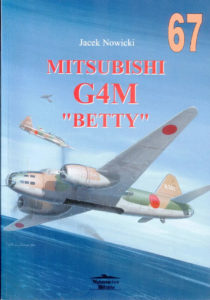
The Mitsubishi G4M was a twin-engine, land-based medium bomber that served in the Imperial Japanese Navy Air Service during World War II. It was designed to have a high speed and a long range, but it sacrificed protection and durability for these advantages. The G4M was often called “Betty” by the Allies, or “Hamaki” (cigar) by the Japanese pilots, because of its cylindrical shape and its tendency to catch fire or explode when hit.
The G4M participated in many battles and missions, such as the sinking of two British warships, the bombing of Darwin, and the transport of Admiral Yamamoto. It was also used to carry the Yokosuka MXY-7 Ohka, a rocket-powered kamikaze aircraft. The G4M was produced from 1939 to 1945, with a total of 2,435 units built. It was the most widely used and most famous bomber operated by the Japanese Navy in World War II.
Views : 920

